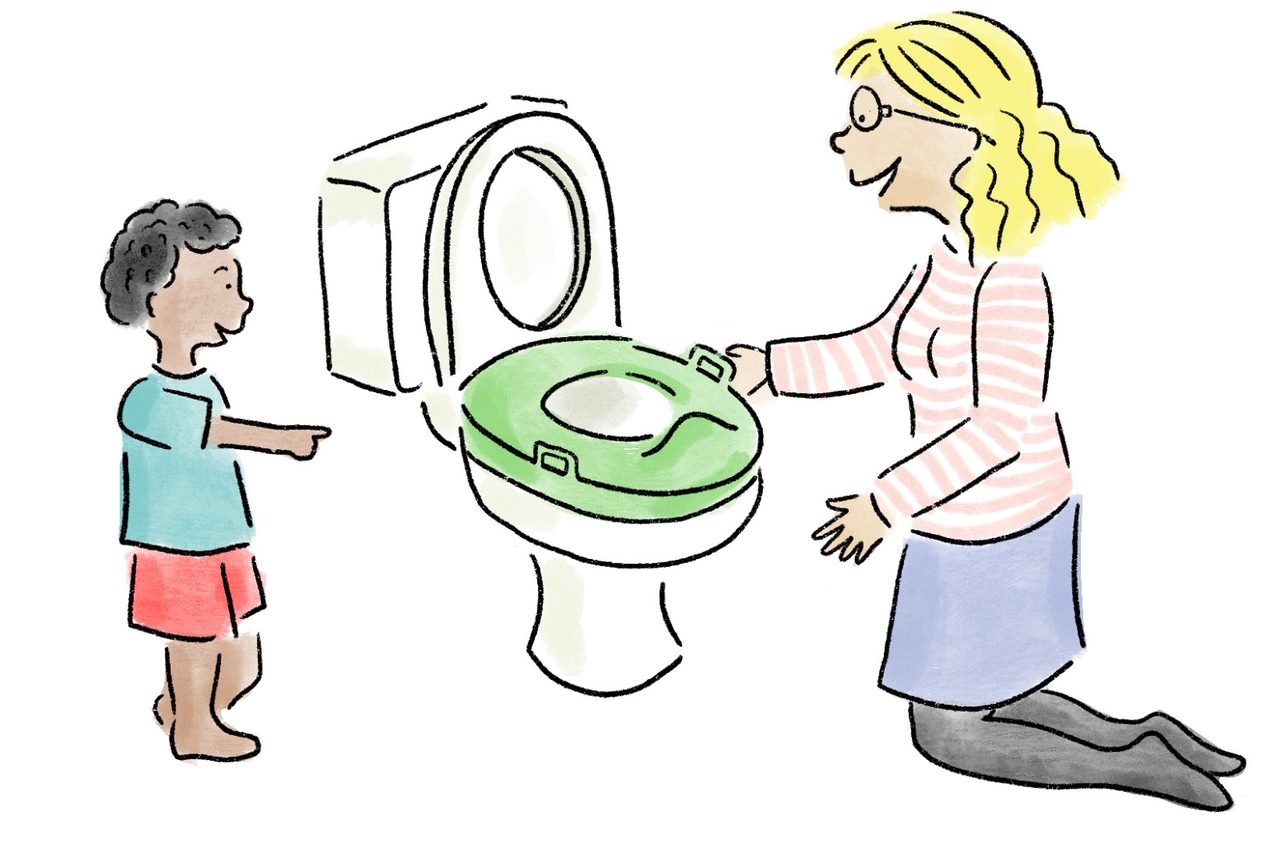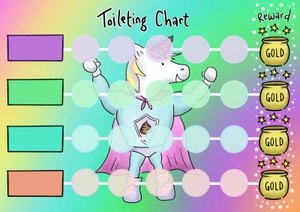Toileting
Strategies for toileting
 Children all develop toileting skills at varied times and communication skills are vital to this process. Many children will follow simple instructions best when supported with a visual cue. This could be an object of reference e.g. “toilet time” and then show your child an object which would represent this. This approach can be used with a photograph, sign, or visual card too. Visual toileting strips in the bathroom area can help a child to remember what are the next steps, this can be at the side of the toilet area.
Children all develop toileting skills at varied times and communication skills are vital to this process. Many children will follow simple instructions best when supported with a visual cue. This could be an object of reference e.g. “toilet time” and then show your child an object which would represent this. This approach can be used with a photograph, sign, or visual card too. Visual toileting strips in the bathroom area can help a child to remember what are the next steps, this can be at the side of the toilet area.
Social story or story books
Social stories can help increase understanding of the toileting process and help to build upon understanding of what will happen next. There are many social stories which can be purchased and individualised to the child and also many character story books are available in many book shops.
Toileting
Children with bladder and/or bowel problems cannot always rely on a good signal telling them they need to go to the toilet. In order to get the wee and poo in the toilet they need a regular toileting routine. Children tend to not spend enough time on the toilet and can hop on and off without concentrating on what they should be doing. It is important that your child feels comfortable and relaxed when using the toilet. Use a foot rest that is high enough that your child’s knees are slightly above the hips. Correct positioning helps to relax the muscles that support comfortably and easy passage of stools.
Toileting Top Tips
- You can use a sand timer to encourage children to sit for longer periods of time. This can be gradually increased, start with 2 minutes and gradually increase to longer intervals.
- Make sure the bathroom is warm and inviting! Close the windows and maybe put up some posters for your child to look at.
- Take advantage of the body’s natural ‘gastrocolic reflex’. Encourage them to try on waking and about 20-30 minutes after main meals and before bed.
- Try to keep to a routine, using the toilet around the same times every day and also when your child says they feel the need to go – always respond to the body’s urge to poo!
- Stay with your child. Do not leave the child sitting on the toilet by themselves for long periods of time.
- Ensure the toilet is comfortable to sit on. Some children fear they will fall into the toilet, so it is important to get an add-on seat for smaller children.
- A footstool is very important to ensure your child has good support for their feet.
- Put some toilet paper into the bowl first so that there is no splashback when a poo is passed. Some children get a fright if there is a splash!
- When sitting on the toilet your child should be able to lean forward and rest their elbows on their knees higher than their hips.
- Your child should be relaxed when sitting on the toilet and not straining.
- Talk to your child when following these steps so that they know what you are trying to achieve.
- Motivate sitting by having a ‘Toilet Tub’ - this could contain a special toy, book or chosen fidget toy to only play when they are sitting. It really helps if you can make it fun.
- Making your child laugh, blowing bubbles or a balloon can help contract their tummy muscles.
- Massage tummy in a clockwise direction.
- Many children find sitting on the toilet challenging. Trying a First and Then approach may help with resistant behaviours e.g “First Toilet, Then Dinosaurs”.
- Add a character of interest on the walls of the bathroom.
Toileting Chart
Positive Feedback
 We all need to be motivated to make behaviour changes so our children will need the same. You can see in your child’s face, their smile and their eyes that children respond to praise. Giving your child positive feedback is a key part to help your child manage constipation. Download the chart here.
We all need to be motivated to make behaviour changes so our children will need the same. You can see in your child’s face, their smile and their eyes that children respond to praise. Giving your child positive feedback is a key part to help your child manage constipation. Download the chart here.
A sticker chart is an easy way to reward your child’s positive behaviours. The idea is that there are specific toileting goals represented by different animals on the Potty Chart. Once they have reached the animal they put a stick on the woodland toilet trail. Every time they reach an animal on the Potty Chart they get a small reward such as:
- Special stickers
- Fun stationary – pencils, rubbers, colouring pencils
- Craft activity
- One-on-one activity with parent – special story, trip to the park, board game
Tips
- Be consistent – always give stickers and verbal praise promptly
- Focus on the positives, give stickers for positive behaviours
- Give verbal praise with each sticker
- Don’t take stickers away once the child has earned that sticker
What if my child doesn’t respond to toileting charts?
Not all children will respond to toileting charts and rewards, if that is the case for your child we have a variety of resources we can share. Visual social stories can often be helpful and you can try tailored rewards for children with additional needs.


